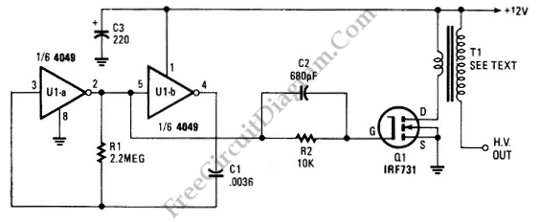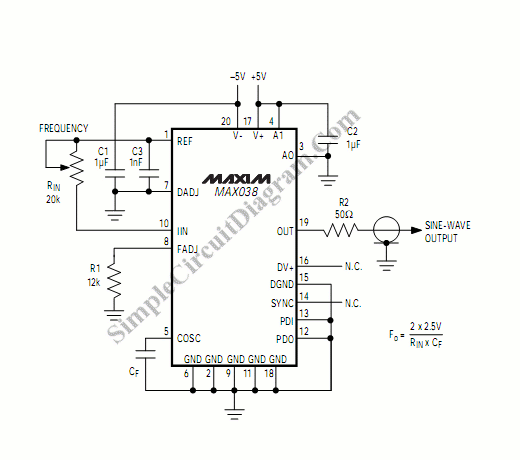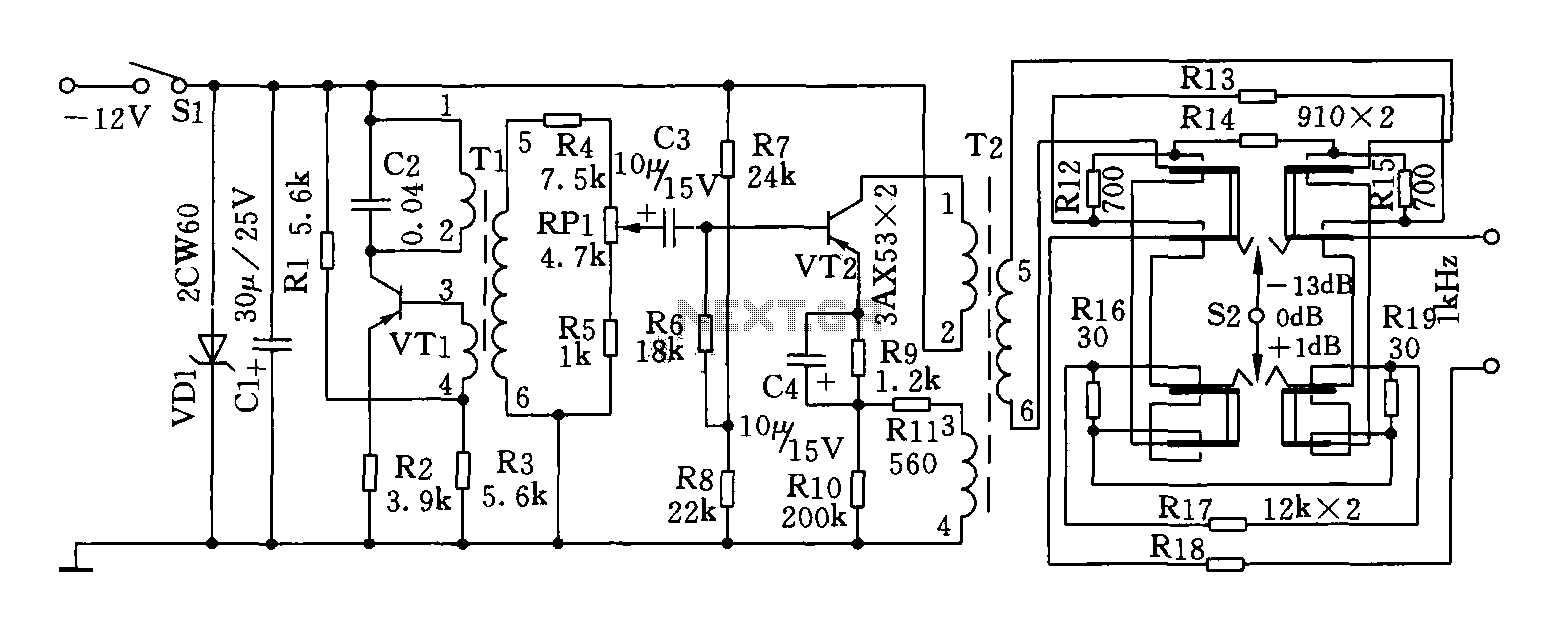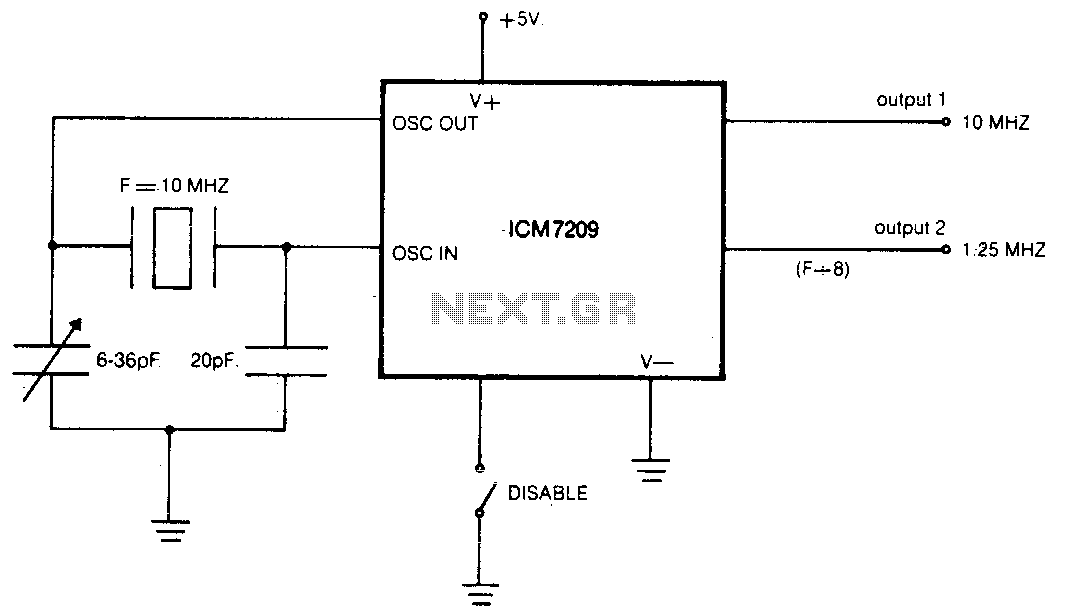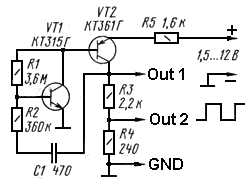
10.7Mhz sweep generator
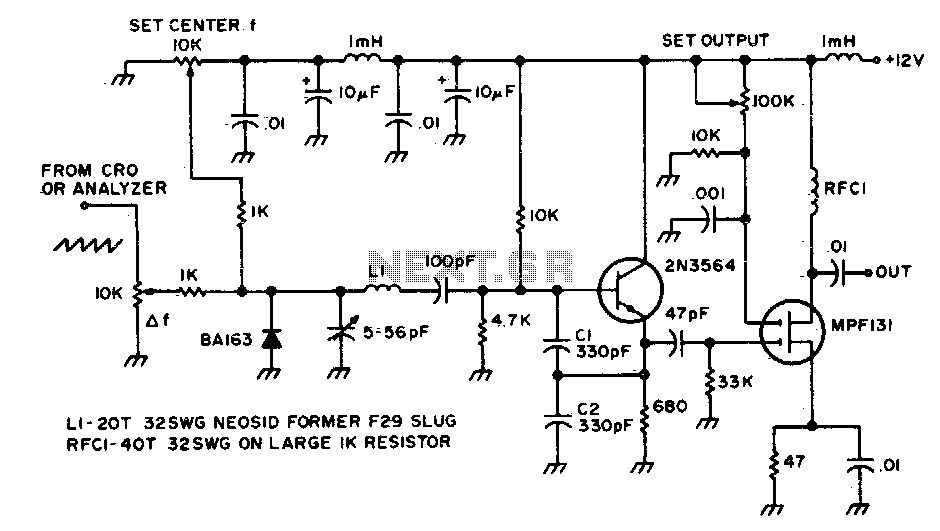
This circuit is utilized to observe the response of an intermediate frequency (IF) amplifier or a filter. It can be employed with an oscilloscope or, for a broader dynamic range, with a spectrum analyzer.
The circuit designed for observing the response of an IF amplifier or filter typically includes several key components that facilitate accurate measurement and analysis of the signal characteristics. At its core, the circuit may consist of a signal source, the IF amplifier or filter under test, and a measurement device such as an oscilloscope or spectrum analyzer.
The signal source generates a test signal, which is fed into the input of the IF amplifier or filter. This component is crucial as it determines the frequency response of the circuit being tested. The IF amplifier is designed to amplify signals at a specific frequency range, while the filter selectively allows certain frequencies to pass while attenuating others.
After the signal has passed through the IF amplifier or filter, it is directed to the measurement device. An oscilloscope is commonly used for time-domain analysis, allowing the user to visualize the waveform of the output signal and assess parameters such as amplitude, frequency, and phase shift. For more comprehensive frequency-domain analysis, a spectrum analyzer can be utilized. This device provides a graphical representation of the signal's frequency components, enabling detailed examination of the circuit's performance across a wider dynamic range.
Additional components such as resistors, capacitors, and possibly inductors may be incorporated into the circuit to ensure stability, reduce noise, and improve the overall performance of the measurement setup. Proper grounding and shielding techniques should also be employed to minimize interference and enhance measurement accuracy.
In summary, this circuit serves as a valuable tool for engineers and technicians to evaluate the performance of IF amplifiers and filters, providing insights that are essential for the design and optimization of communication systems and signal processing applications.This circuit is used to observe the response of an if amp or a filter It can be used with an oscilloscope or, for more dynamic range, with a spectrum analyzer. 🔗 External reference
The circuit designed for observing the response of an IF amplifier or filter typically includes several key components that facilitate accurate measurement and analysis of the signal characteristics. At its core, the circuit may consist of a signal source, the IF amplifier or filter under test, and a measurement device such as an oscilloscope or spectrum analyzer.
The signal source generates a test signal, which is fed into the input of the IF amplifier or filter. This component is crucial as it determines the frequency response of the circuit being tested. The IF amplifier is designed to amplify signals at a specific frequency range, while the filter selectively allows certain frequencies to pass while attenuating others.
After the signal has passed through the IF amplifier or filter, it is directed to the measurement device. An oscilloscope is commonly used for time-domain analysis, allowing the user to visualize the waveform of the output signal and assess parameters such as amplitude, frequency, and phase shift. For more comprehensive frequency-domain analysis, a spectrum analyzer can be utilized. This device provides a graphical representation of the signal's frequency components, enabling detailed examination of the circuit's performance across a wider dynamic range.
Additional components such as resistors, capacitors, and possibly inductors may be incorporated into the circuit to ensure stability, reduce noise, and improve the overall performance of the measurement setup. Proper grounding and shielding techniques should also be employed to minimize interference and enhance measurement accuracy.
In summary, this circuit serves as a valuable tool for engineers and technicians to evaluate the performance of IF amplifiers and filters, providing insights that are essential for the design and optimization of communication systems and signal processing applications.This circuit is used to observe the response of an if amp or a filter It can be used with an oscilloscope or, for more dynamic range, with a spectrum analyzer. 🔗 External reference
